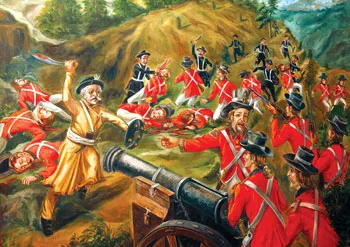Introduction:
Nepal, nestled amidst the towering peaks of the Himalayas, boasts a history as rich and diverse as its breathtaking landscapes. From ancient civilizations to modern democratic struggles, Nepal’s journey through time reflects a tapestry of conquests, cultural exchanges, and societal transformations. Traversing through epochs of dynasties, kingdoms, and political upheavals, Nepal has emerged as a nation with a resilient spirit, defined by its vibrant traditions and enduring quest for identity. In this exploration, we delve into the annals of Nepal’s history, unraveling the threads that weave together the story of this captivating Himalayan nation.
-
Ancient Period: Nepal’s history begins in the ancient period with the arrival of various ethnic groups. The Kirats, Lichhavis, and Thakuris were among the early settlers. The Kirats are considered to be the first rulers of the Kathmandu Valley.
-
Medieval Period: During this period, Nepal saw the rise of powerful kingdoms. The Licchavi dynasty (4th to 9th century) is notable for its advancements in art, architecture, and trade. The Malla dynasty (12th to 18th century) furthered these developments and divided Nepal into smaller kingdoms, with Bhaktapur, Kathmandu, and Patan being major city-states.
-
Unification under Prithvi Narayan Shah: Prithvi Narayan Shah, the king of the small principality of Gorkha, embarked on a campaign to unify the smaller kingdoms into one nation. He succeeded in 1768, establishing the Kingdom of Nepal.
-
Shah Dynasty: The Shah dynasty ruled Nepal from 1768 until 2008. The kingdom saw periods of stability and expansion, but also internal strife and conflicts.
-
Rana Rule: The Rana dynasty came into power in the mid-19th century after a power struggle within the Shah dynasty. The Ranas held power for more than a century, ruling as hereditary prime ministers while keeping the Shah kings as figureheads.
-
Democratization and Modernization: In the mid-20th century, Nepal saw movements for democracy and modernization. The Rana rule ended in 1951 after the revolution of 1950-1951, which led to the establishment of a constitutional monarchy.
-
Constitutional Monarchy and Political Turmoil: Nepal experienced political instability in the latter half of the 20th century, with periods of democratic governance interspersed with royal dictatorships. The country was declared a federal democratic republic in 2008 after the abolition of the monarchy.
-
Maoist Insurgency: Nepal experienced a decade-long Maoist insurgency from 1996 to 2006, during which thousands lost their lives. The conflict ended with the Comprehensive Peace Agreement in 2006.
-
Recent Developments: Since the end of the civil war, Nepal has been working on building a stable democratic system. However, political instability, natural disasters (such as the 2015 earthquake), and challenges related to economic development and social inclusion persist.

